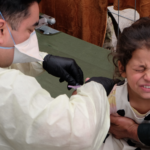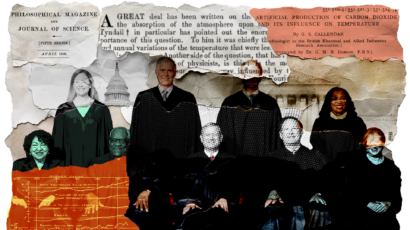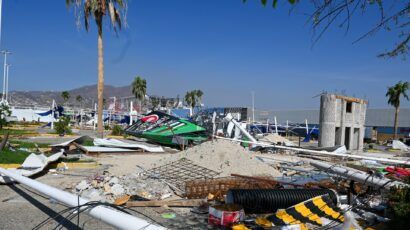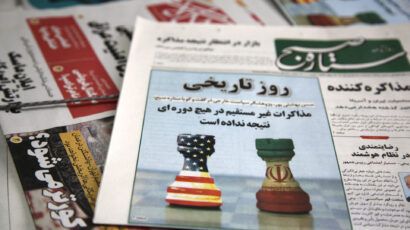Leadership in a public health crisis
By Laura H. Kahn | September 28, 2009
Max Weber, the noted German sociologist of the late-nineteenth and early-twentieth century, wrote that an inherent conflict exists between political and bureaucratic leaders. Political leaders strive to get reelected and implement their ideologically based policies while bureaucratic leaders aim to perpetuate and expand their bureaucracies. Weber’s theory on dueling leaders is especially applicable to understanding public health responses to crises since how officials lead, communicate with each other, and communicate with the public can significantly affect the outcome of an outbreak or bioterrorism attack.
While researching my new book, Who’s in Charge? Leadership during Epidemics, Bioterror Attacks, and Other Public Health Crises, I drew on newspaper articles, medical journals, and government inquiries as well as first-person accounts from mayors, public health officials, medical and veterinary leaders, scientists, and journalists in order to understand the different, but equally important, roles and responsibilities of political and public health leaders. My goal was to understand why leadership problems develop during such crises.
It’s fair to say that political leaders are generally not good at providing accurate updates during a developing crisis or at explaining risk to the public.”
I explored a number of crises in depth: the cryptosporidium crisis in Milwaukee in 1993, the anthrax crisis in 2001, and the SARS crisis in Toronto in 2003. In addition, since many novel diseases emerge from animals, I also studied the decade-long (1986–1996) bovine spongiform encephalopathy crisis (BSE, or “Mad Cow”) and the 2001 foot-and-mouth disease crisis (FMD), both in Britain.
Finally, I briefly examined three influenza crises: the 1977 swine flu, 1997 avian flu, and 2009 swine flu. All involved novel influenza viruses, and all forced officials to make difficult policy decisions.
In fact, while studying them, I found four key themes that help explain why leadership problems develop during crises.
(1) Engaged and informed political leaders are critical. In particular, there are two models of political leadership: the Giuliani Model (after former New York City Mayor Rudy Giuliani) and the Glendening Model (after former Maryland Governor Parris Glendening). In the Giuliani Model, the elected official takes the lead by making key decisions with advice from experts. This model was exemplified by the relationship between Mayor Giuliani and the New York City Health Commissioner Neal Cohen. Giuliani made key decisions and took center stage with the press during the New York anthrax crisis in 2001 while Cohen served as the expert adviser and provided Giuliani with detailed public health information about the crisis. In the Glendening Model, the bureaucratic leader takes the lead by making key decisions with political support from the elected official. For example, in Maryland during the same anthrax crisis, State Health Secretary Georges Benjamin made the programmatic decisions, but also made sure to get political support from Gov. Glendening.
Both models can work as long as the parties understand their relationship with each other; problems develop when there is a misunderstanding between the players. In New Jersey, Acting Gov. Donald DiFrancesco and Acting State Health Commission George DiFerdinando hadn’t had time to develop a working relationship before the 2001 anthrax crisis hit. Without political support, DiFerdinando ran into difficulties with the Center for Disease Control and Prevention over recommending prophylactic antibiotics to local postal workers.
Interestingly, in Canada and other countries with parliamentary systems, the Glendening Model appears to predominate while in the United States both models occur–in part because political leaders are more entrepreneurial in the United States and play a bigger role in policy implementation.
During the 2003 SARS crisis in Toronto, the political leaders followed the Glendening Model by deferring to the public health leaders to make decisions and to communicate with the public. But when the crisis worsened and the World Health Organization (WHO) issued a travel advisory against the city, problems developed. The political leaders at the municipal, provincial, and national levels were criticized for not showing leadership and not being involved. Toronto Mayor Mel Lastman exacerbated the perception of poor political leadership by making uninformed comments during media events. He displayed a complete lack of understanding of the crisis at hand by blasting WHO even when it was clear he had no idea what WHO was. He was subsequently replaced by Deputy Mayor Case Ootes. Fortunately, Canada’s robust public health and medical infrastructures were able to handle the crisis despite the political leaders’ bumbling efforts.
(2) Elected officials must rely on their best judgment and common sense when science doesn’t have all the answers. During the first decade of the BSE crisis, it wasn’t known that humans could become infected with this disease. Political leaders had to make difficult decisions affecting industry not knowing if human health would be affected down the road. For example, one government advisory group recommended banning potentially dangerous animal products from baby food. Lord John MacGregor, the minister of agriculture, fisheries, and food, used his common sense and best judgment by taking the recommendation a step further and banning potentially dangerous animal products from all foods regardless of the age of the consumer.
Common sense and best judgment are especially necessary when expert advisers aren’t in agreement. The FMD crisis revealed unexpected internal strife between scientific advisers: mathematical modeling experts and FMD virologists disagreed on how best to respond. The modelers’ involvement was precipitated by false reassurances that “everything was under control” by the political and bureaucratic leaders in charge. When it became increasingly apparent that the crisis was spiraling out of control the modelers recommended draconian measures to contain the epidemic, which worked, but at a high price (See “Modeling disease spread”.) Shortages of personnel and resources exacerbated the problems. In the end, Prime Minister Tony Blair had to assume leadership. Unfortunately, by the time the crisis was finally contained, more than 6 million animals were slaughtered, Britain lost an estimated $2.9 billion in gross domestic product, and at least three farmers committed suicide.
(3) Political and bureaucratic officials must communicate effectively with each other and with the public. As the FMD crisis illustrated, political officials sometimes want to reassure the public that everything is under control even when it’s not. However, at the other extreme, leaders can exacerbate public panic by exaggerating the severity of the crisis. During this year’s swine flu crisis, Vice President Joe Biden damaged public confidence when he stated he wouldn’t be flying or traveling in enclosed spaces. It’s fair to say that political leaders are generally not good at providing accurate updates during a developing crisis or at explaining risk to the public. Unfortunately, public health and medical leaders aren’t necessarily skilled at public communications either. They tend to use medical or scientific jargon that the public might not understand. And while political leaders are usually eager to get in front of cameras, those in science, public health, and medicine are far more reluctant to speak publicly, regardless of the media’s desire for information from experts.
(4) A nation’s legal framework and organizational infrastructure influence decision-making. When a crisis impacts normal societal functions and overwhelms local capabilities, political leaders must declare a state of emergency and seek assistance since they’re responsible for the lives and well-being of the people in their jurisdictions. A bioterrorism attack against the United States, for example, would require a federal-level response to protect national security. At the same time, it’s a public health crisis, so it’s a state-level responsibility. This duality leads to confusion and unnecessary complexity, and calls for a better definition of whose responsibility such a public health emergency should be. Of course, this not only applies to a bioterrorism attack but also to infectious disease crises since the current leadership and responsibility arrangements guarantee that responses are delayed.
Unfortunately, leadership challenges during public health crises are often identified as important only after the events. Who’s in Charge? examines a number of crises and identifies factors that might contribute to understanding why leadership problems develop. It is my hope that this book provides political and bureaucratic leaders, as well as interested members of the media and public, helpful information to use before the next crisis hits. In the next two columns, I will explore in greater detail some of the most telling case studies from the book.
Together, we make the world safer.
The Bulletin elevates expert voices above the noise. But as an independent nonprofit organization, our operations depend on the support of readers like you. Help us continue to deliver quality journalism that holds leaders accountable. Your support of our work at any level is important. In return, we promise our coverage will be understandable, influential, vigilant, solution-oriented, and fair-minded. Together we can make a difference.
Topics: Biosecurity, Columnists















